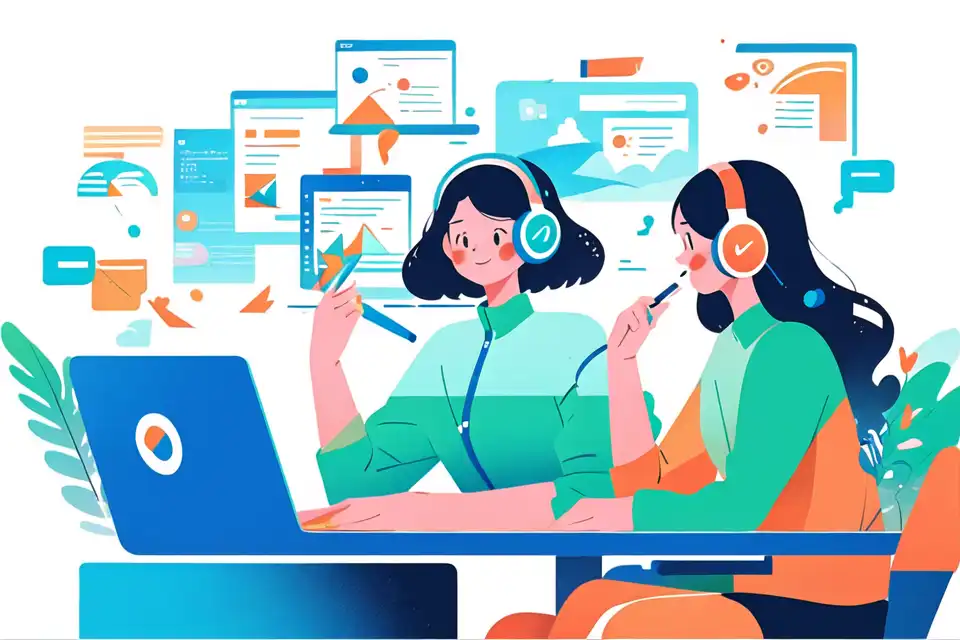Interview Questions for Ui Designers (with Top Questions and Answers)
Mastering the Art of Job Interviews for interview questions for ui designers: Job Interview Examples and Insights
Try Lark for Free
Preface
In today's increasingly digital world, the role of UI Designers has become pivotal for businesses looking to create visually compelling and user-friendly interfaces. As companies strive to offer seamless user experiences, the demand for skilled UI Designers has surged. This comprehensive guide is designed to help aspiring UI Designers understand what hiring managers are seeking, prepare for interviews, and ace the top questions that may be posed. Additionally, it addresses the do's and don'ts of UI design interviews and provides insightful FAQs to further enhance your preparation.
What are hiring managers looking for in a ui designers role?
The role of a UI Designer is multifaceted and requires a unique blend of creativity, technical proficiency, and an understanding of user behavior. Hiring managers seek professionals who can effectively drive the visual and interactive elements of a digital interface. They are looking for candidates with a deep understanding of design principles, the ability to work in a collaborative environment, and a penchant for continuous learning and adaptation. Moreover, a strong portfolio that showcases the candidate's capability to translate design concepts into impactful solutions is highly valued.
How to prepare for a ui designers interview
Step 1: Researching the company and understanding its UI design needs.
Before the interview, research the company's products, services, and existing design language to understand its UI design requirements. Analyze their current UI/UX features, and identify areas where you can contribute valuable insights. This will demonstrate your keen interest in the company and your preparedness for the role.
Step 2: Showcasing a diverse portfolio of UI design projects.
Prepare a comprehensive portfolio that includes a variety of UI design projects, highlighting your proficiency across different platforms and devices. Your portfolio should reflect your ability to address unique design challenges, utilize industry-standard design tools, and adapt to varying design processes, thereby emphasizing your versatility as a UI Designer.
Step 3: Preparing for potential design challenges and case studies.
Anticipate practical design challenges and case studies that you may encounter during the interview. Being prepared to demonstrate your problem-solving skills and creativity in real-time scenarios will showcase your ability to think critically and apply your design expertise effectively.
Use Lark for video interviews and candidate tracking.
Top 5 interview questions for ui designers and how you should answer them
Question 1: "Can you describe your design process from concept to implementation?"
Why does this question matter? This question evaluates the candidate's ability to articulate a comprehensive design process, demonstrating a structured approach to problem-solving and creativity.
What do they listen for in your answer? Hiring managers listen for the candidate's capacity to describe an iterative and user-centric design process, including the ideation, prototyping, and implementation stages, highlighting the candidate's attention to detail and understanding of design principles.
Sample answer I begin by understanding the end-user requirements and pain points, followed by creating wireframes and mockups to visualize the design. Once the initial concepts are refined, I proceed with usability testing and iterate based on user feedback, culminating in a pixel-perfect design ready for development.
Question 2: "How do you prioritize user experience and visual aesthetics in your design?"
Why does this question matter? This question aims to gauge the candidate's understanding of the balance between functionality and aesthetics in design, emphasizing the significance of user satisfaction and visual appeal.
What do they listen for in your answer? Hiring managers are attentive to the candidate's strategies for harmoniously integrating user experience and visual elements, focusing on achieving a seamless and visually appealing interface that prioritizes user engagement and satisfaction.
Sample answer I prioritize user experience by conducting in-depth user research and creating intuitive and accessible interfaces. Simultaneously, I ensure that the design visually captivates users, employing a cohesive blend of color theory and typography to elevate the visual aesthetics while maintaining functional clarity.
Question 3: "Can you provide an example of a UI design problem you encountered and how you solved it?"
Why does this question matter? This question assesses the candidate's ability to apply their design skills in resolving real-world challenges, demonstrating their problem-solving capabilities and adaptability in dynamic design scenarios.
What do they listen for in your answer? Hiring managers seek instances of the candidate's practical application of UX/UI principles to overcome design obstacles, highlighting their ability to innovate and navigate through complex design dilemmas effectively.
Sample answer In a previous project, I encountered a navigation layout optimization challenge. To address this, I conducted card-sorting exercises to refine the navigational structure, resulting in a more intuitive and user-friendly layout that significantly improved the overall user experience.
Question 4: "How do you stay updated with the latest UI design trends and technologies?"
Why does this question matter? This question evaluates the candidate's commitment to continuous learning and staying abreast of industry developments, emphasizing the importance of innovation and adaptability in UI design.
What do they listen for in your answer? Hiring managers are interested in the candidate's proactive approach to learning and self-improvement, focusing on their utilization of resources and involvement in the design community to remain updated with emerging trends and technologies.
Sample answer I stay current by engaging with industry publications, attending design conferences, and participating in online design communities. I also allocate time for hands-on exploration of new design tools and technologies, incorporating relevant methodologies into my design process.
Question 5: "Can you walk us through a UI design project you are particularly proud of?"
Why does this question matter? This question enables the candidate to present a compelling demonstration of their design expertise and personal investment in a specific project, showcasing their problem-solving abilities and creativity.
What do they listen for in your answer? Hiring managers seek a detailed account of the candidate's project involvement, design decisions, and the subsequent impact of their work, emphasizing their ability to communicate their design rationale cohesively and confidently.
Sample answer I spearheaded the redesign of an e-commerce platform, enhancing the user interface to streamline the purchase journey. By implementing an intuitive navigation structure and refining the checkout process, we observed a 30% increase in conversion rates, underscoring the positive impact of the design enhancements on user interaction and business outcomes.
Do's and don'ts for ui designers interviews
Do's
- Adaptability: Showcase your flexibility and openness to feedback, underscoring your ability to adjust your design approach based on evolving project demands and user preferences.
- Communication: Emphasize your communication skills, demonstrating the capacity to convey complex design concepts clearly and collaborate effectively with cross-functional teams.
- Portfolio Presentation: Display a well-organized and diverse portfolio that showcases your design versatility across platforms, devices, and industries.
Don'ts
- Generic Design Solutions: Avoid presenting standard or overused design templates without personalization, as this may overshadow your creativity and individual design approach.
- Technical Jargon Overload: Refrain from inundating the conversation with excessive technical terminology, ensuring that your design explanations are accessible and comprehensible to a non-technical audience.
- Neglecting User Feedback: Never underestimate the value of user feedback; failing to integrate user-centric revisions could weaken the impact of your design solutions.
Learn more about Lark x Employment








